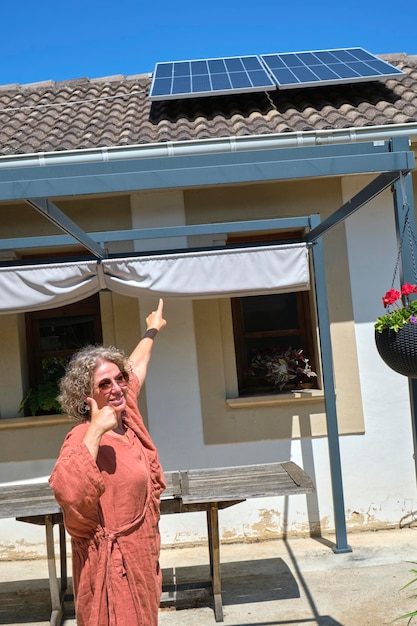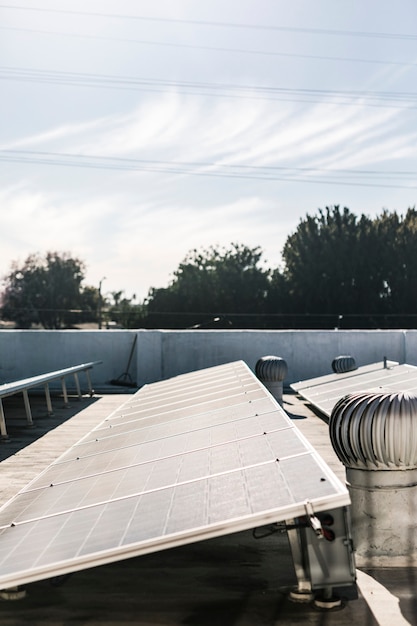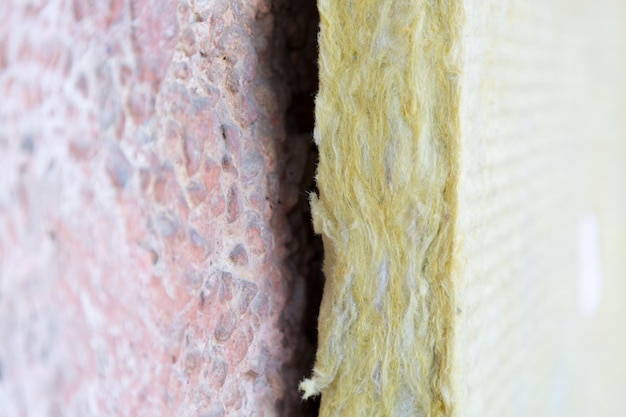Maximize Savings: A Guide to Energy-Efficient Home Improvement Tax Credits

Tax credits for energy-efficient home improvements can significantly reduce your carbon footprint and save money. These incentives encourage homeowners to invest in upgrades that lower energy consumption, offering financial relief and promoting environmental sustainability.
Investing in energy-efficient home improvements not only benefits the environment but can also significantly reduce your tax burden. Understanding the available tax credits for energy-efficient home improvements is crucial for homeowners looking to save money and contribute to a greener future.
Understanding Tax Credits for Energy-Efficient Home Improvements
Tax credits provide a direct reduction in your tax liability, making energy-efficient upgrades more affordable. By claiming these credits, homeowners can recoup a portion of their investment, reducing the overall cost of improving their home’s energy performance.
These credits are designed to encourage investments in renewable energy sources and energy conservation measures. Let’s delve into the specific types of tax credits available and how they can benefit you.
Types of Energy-Efficient Home Improvement Tax Credits
Several tax credits target specific types of energy-efficient home improvements. Knowing these can guide your investment decisions.
- Residential Clean Energy Credit: This credit covers investments in renewable energy sources like solar panels, solar water heaters, and wind turbines.
- Energy Efficiency Home Improvement Credit: Focused on improving the energy efficiency of your home through upgrades like insulation, energy-efficient doors, windows, and certain heating and cooling equipment.
Eligibility Requirements for Home Improvement Tax Credits
To claim these tax credits, certain eligibility requirements must be met. Understanding these conditions is essential for a successful claim.
- Meeting Energy Efficiency Standards: Products must meet specific energy efficiency standards set by the IRS or the Department of Energy.
- Proper Installation and Documentation: Correct installation is crucial, and you must keep detailed records of your purchase and installation costs.
- Ownership of the Property: You typically need to own the home where the improvements are being made and use it as your primary residence.

In conclusion, tax credits for energy-efficient home improvements offer valuable incentives for homeowners. By understanding the types of credits, eligibility requirements, and how to claim them, you can save money while making your home more environmentally friendly.
Navigating the Residential Clean Energy Credit
The Residential Clean Energy Credit is a significant incentive for homeowners investing in renewable energy technologies. This credit helps offset the cost of installing systems that harness clean energy, reducing reliance on conventional energy sources.
This credit covers a range of renewable energy systems, making it an attractive option for those looking to adopt sustainable energy solutions. Here’s a closer look at what it covers.
Eligible Renewable Energy Systems
The Residential Clean Energy Credit includes several types of renewable energy systems that can be installed in your home.
- Solar Panels (Photovoltaic Systems): These convert sunlight into electricity. The credit covers the cost of the panels and installation.
- Solar Water Heaters: These systems use sunlight to heat water for domestic use, reducing reliance on traditional water heaters.
- Wind Turbines: Small-scale wind turbines can generate electricity for your home, and their installation costs are covered by the credit.
Claiming the Residential Clean Energy Credit
In practice, claiming the Residential Clean Energy Credit involves few steps.
- Calculate the Credit Amount: The credit is typically a percentage of the total cost of the system, including installation. Refer to IRS guidelines for the specific percentage.
- Complete IRS Form 5695: This form is used to claim the Residential Energy Credits. Provide details about the system and the costs incurred.
- Submit with Your Tax Return: Include Form 5695 when you file your annual tax return.
In closing, the Residential Clean Energy Credit provides substantial financial benefits for homeowners investing in renewable energy. By understanding the eligible systems and the process for claiming the credit, you can make your home more sustainable while saving money on your taxes.
Exploring the Energy Efficiency Home Improvement Credit
The Energy Efficiency Home Improvement Credit focuses on upgrades that improve the energy efficiency of your home. This credit encourages homeowners to invest in renovations that reduce energy consumption and lower utility bills.
This credit covers a variety of improvements that can enhance your home’s energy performance. Let’s take a look at some of the key upgrades that qualify.

Qualifying Energy Efficiency Improvements
Several types of home improvements are eligible for the Energy Efficiency Home Improvement Credit.
- Insulation: Adding insulation to your attic, walls, or floors can significantly reduce heat loss in the winter and heat gain in the summer.
- Energy-Efficient Windows, Doors, and Skylights: Upgrading to energy-efficient windows, doors, and skylights can prevent drafts and reduce energy waste.
- Energy-Efficient Heating, Ventilation, and Air Conditioning (HVAC) Systems: Installing high-efficiency furnaces, air conditioners, and heat pumps can lower your energy consumption.
Maximizing Your Savings with the Credit
Homeowners should focus on improvements that offer the greatest energy savings and align with their budget. Prioritize insulation upgrades in areas with poor insulation, such as attics and basements.
- Tax Credit Limits: Be aware of any limits on the amount of credit you can claim for specific improvements.
- Installation Standards: Ensure that all improvements are installed correctly to meet energy efficiency standards and qualify for the credit.
In essence, the Energy Efficiency Home Improvement Credit is a valuable tool for homeowners looking to improve their home’s energy efficiency. By understanding the qualifying improvements and how to maximize your savings, you can make your home more comfortable and reduce your energy bills.
Eligibility Criteria for Claiming Tax Credits
To successfully claim tax credits for energy-efficient home improvements, you must meet specific eligibility criteria. These conditions ensure that the credits are used as intended and that homeowners are making genuine investments in energy efficiency.
Understanding these criteria is essential for a smooth and successful claim. Here are some of the key requirements you need to be aware of.
Homeownership and Primary Residence
Typically, you must own the home where the improvements are being made and use it as your primary residence.
- Ownership Requirement: The home must be owned by the person claiming the credit. Renters are generally not eligible for these credits.
- Primary Residence: The home must be the taxpayer’s primary residence, meaning it is where they live most of the year. Second homes or vacation properties may not qualify.
Energy Efficiency Standards
The products you install must meet specific energy efficiency standards set by the IRS or the Department of Energy.
- Meeting Standards: Look for products that are certified by programs like Energy Star, which indicates they meet or exceed the required efficiency standards.
- Documentation: Keep records of the energy efficiency ratings and certifications of the products you purchase.
Ultimately, meeting the eligibility criteria is vital for successfully claiming tax credits for energy-efficient home improvements. By understanding these requirements and ensuring you comply with them, you can avoid complications and maximize your tax savings.
Step-by-Step Guide to Claiming Your Tax Credits
Claiming tax credits for energy-efficient home improvements involves a straightforward process. Knowing each step will ensure you receive the credits you’re entitled to.
Let’s walk through the process, providing clear instructions and essential tips for a successful claim.
Gathering Necessary Documentation
Before you start the claim process, gather all the necessary documentation related to your energy-efficient home improvements.
- Receipts: Collect all receipts for the purchase and installation of qualifying energy-efficient improvements. These receipts should include the date of purchase, the name of the vendor, and a description of the items or services purchased.
- Manufacturer’s Certifications: Obtain manufacturer’s certifications for the energy-efficient products you’ve installed. These certifications confirm that the products meet the necessary energy efficiency standards.
Completing IRS Form 5695
The IRS Form 5695, titled “Residential Energy Credits,” is used to claim both the Residential Clean Energy Credit and the Energy Efficiency Home Improvement Credit.
When filling out IRS Form 5695, accuracy and attention to detail are critical. Double-check all calculations and ensure that the information provided aligns with your gathered documentation. Any discrepancies or incomplete information could lead to delays or rejection of your tax credit claim.
In brief, claiming tax credits for energy-efficient home improvements is a manageable process when approached methodically. By gathering the necessary documentation and accurately completing IRS Form 5695, you can successfully claim your credits and enjoy the financial benefits of your energy-efficient upgrades.
Maximizing Your Return on Investment
To truly maximize your return on investment (ROI) with energy-efficient home improvements, strategic planning and informed decision-making are essential. By selecting the right projects and understanding the long-term benefits, you can optimize your savings and enhance your home’s value.
Here’s how to make the most of your investment.
Choosing the Right Projects
Evaluate your home’s energy needs and identify areas where improvements can make the biggest impact. Conduct an energy audit to pinpoint inefficiencies, such as poor insulation, leaky windows, or outdated HVAC systems. Focus on projects that offer both significant energy savings and qualify for tax credits.
- Insulation Upgrades:
Properly insulating your attic, walls, and floors can dramatically reduce heat loss and gain, leading to substantial energy savings. - Energy-Efficient HVAC Systems:
Upgrade to high-efficiency furnaces, air conditioners, or heat pumps to lower your energy consumption and take advantage of tax credits.
Long-Term Benefits and Savings
Investing in energy-efficient home improvements yields benefits. Lower energy bills provide immediate savings, and reduced energy consumption can increase your property value by making it more attractive to potential buyers.
- Reduced Energy Bills: Enjoy lower monthly energy bills as your home becomes more efficient and consumes less energy.
- Increased Property Value: Enhance your home’s appeal to potential buyers, making it more competitive in the real estate market.
In conclusion, maximizing your return on investment with energy-efficient home improvements requires careful planning and strategic decision-making. By choosing the right projects, understanding the long-term benefits, and taking advantage of available tax credits, you can enhance your home’s value, reduce your energy bills, and contribute to a more sustainable future.
| Key Point | Brief Description |
|---|---|
| 💰 Tax Credits | Reduce tax liability for energy-efficient upgrades. |
| ☀️ Clean Energy Credit | Covers solar panels, water heaters, and wind turbines. |
| 🏠 Home Improvement Credit | Focuses on insulation, windows, doors, and HVAC systems. |
| ✅ Eligibility | Requires homeownership, primary residence, and certified products. |
Frequently Asked Questions (FAQ)
▼
They are government incentives designed to help homeowners invest in energy-saving upgrades, such as solar panels or insulation, by reducing their tax liability.
▼
Qualifying improvements include solar panels, solar water heaters, wind turbines, insulation, energy-efficient windows, doors, and HVAC systems.
▼
To claim these credits, fill out IRS Form 5695, “Residential Energy Credits,” and submit it with your annual tax return, including all necessary documentation.
▼
Yes, there are often limits to the amount of credit you can claim, depending on the specific improvement and current tax laws, so check the IRS guidelines.
▼
Yes, you typically need to own the home where the improvements are being made and use it as your primary residence to qualify for these tax credits.
Conclusion
Tax credits for energy-efficient home improvements are a powerful tool for homeowners looking to reduce their carbon footprint and save money. By understanding the available credits, eligibility requirements, and claiming processes, you can make informed decisions that benefit both your wallet and the environment.
